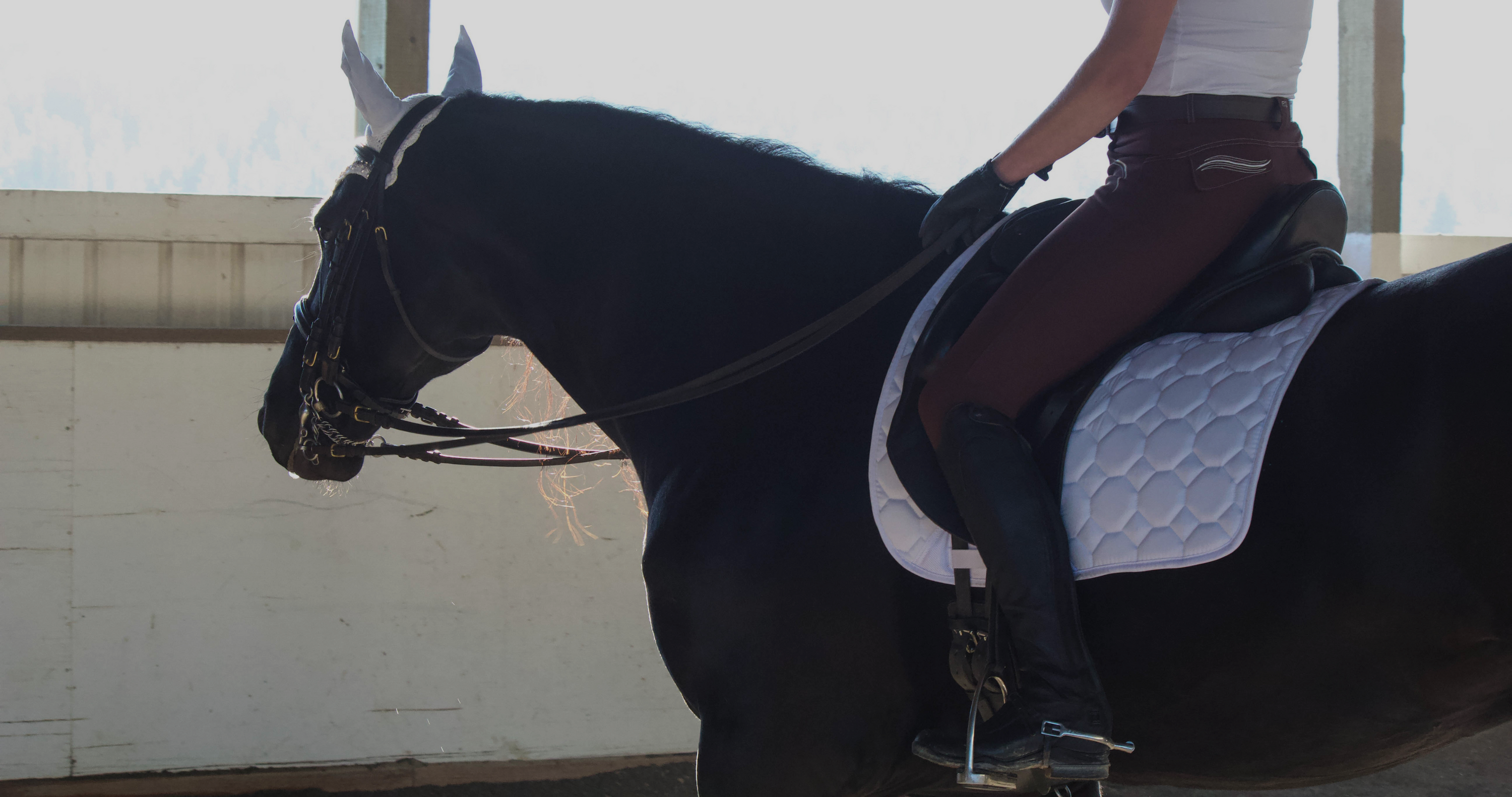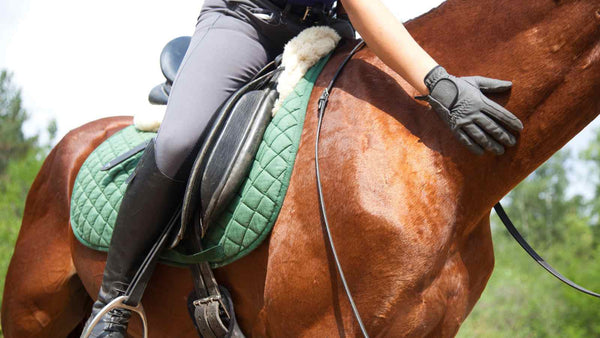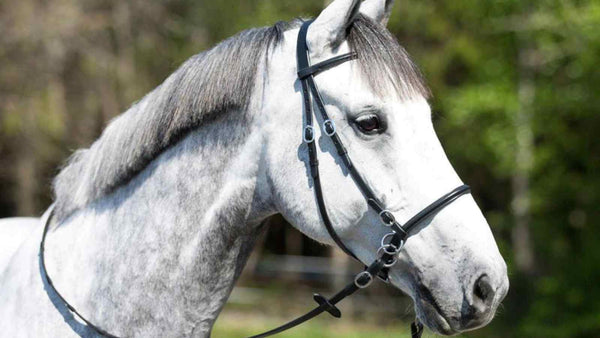Many equestrians balk at the phrase “positive reinforcement training.” They picture horses fed handfuls of treats and unsafe horsemanship practices. In reality, there’s a lot of benefit to including positive reinforcement techniques into the daily routine of the competitive dressage horse.
First, what is positive reinforcement training? In this scenario, positive reinforcement can look like empathetic riding that includes verbal praise, wither scratches, riding with a lighter hand, changing your horse’s daily routine, and, yes– using treats in your training. There are many different ways to incorporate positive reinforcement training into your dressage horse’s life. How you go about it depends on your goals and your individual horse.
Reduce the Pressure
For some horses, positive reinforcement training can look as simple as taking the pressure off. If every ride feels like a race towards perfection, this might be a good tactic for you.
Taking the pressure off can look like releasing the reins after riding in collection for a short time, instead of drilling the exercise for an entire ride. It could also include shortening the duration of your rides and ensuring your mix in some relaxing, undemanding training into your riding routine.
Overall, reducing pressure means being empathetic with how your dressage horse is feeling that day. As equestrians, we are not always perfect, so why should our horses be? Instead of aiming for perfection, keep your goals flexible and take into account your dressage horse’s daily stressors. Did they have a tough ride recently? Was their feed or turnout changed? By considering your horse’s perspective and adjusting your expectations accordingly, you’re practicing empathetic horsemanship.
Allow Your Horse to Stretch Often
How often do you allow your dressage horse a loose rein where they can really stretch out their topline? As riders, we should offer our horses the opportunity to warm up slowly and stretch out their bodies every single ride. Stretching can be relaxing for the horse and is a great reward after a hard workout.
To encourage your horse to stretch and relax, loosen your reins and encourage your horse to take their head towards the ground in a long-and-low position. Use your legs to maintain the impulsion and keep your horse moving through the stretch.
Alternatively, if your horse has a hard time stretching under saddle, increase their flexibility on the ground with carrot stretches. This easy form of bodywork is good for your horse both physically and mentally. Not only does it help prevent imbalances in the body and increase their flexibility, it also encourages them to think differently about what you’re asking of them. Plus, it’s almost guaranteed to be their favorite activity, thanks to the treats.
Choose the Right Tack
A dressage horse that is unhappy in their tack will never enjoy their work no matter how many treats you feed them. Working with a saddle fitter and a bridle fitter to get your tack checked regularly is a basic horse care task that can go a long way towards a happier horse.
While many equestrians have had their saddle fit, few have had their bridle and bit fit to their horse. Many horses are perfectly happy being ridden in a bit, but if your horse isn’t, why not try bitless? Don’t let yourself be peer pressured into a choice that isn’t in the best interest of your horse. Plus, it doesn’t have to be black and white. You can ride your horse bitless in your everyday schooling rides and use the bit when the circumstances call for it.
Here’s how this ties into positive reinforcement training– going bitless ensures you aren’t relying too much on your hands, gives your horse a break, and encourages you to ride with more seat and leg, and less hand. In short, going bitless can make you a more empathetic rider.
Keep It Fun
Remember, horseback riding is supposed to be fun first. If you and your dressage horse aren’t having fun, then why are you doing it?
Keep your horse’s routine fun by mixing it up. Don’t spend every day in the sand box. Instead, try trail riding, cross training, or throw in a little bit of low jumping or polework into your dressage horse’s routine. Don’t be afraid to get out of the saddle and do some groundwork, like lunging or ground driving, as well.
Varying your horse’s routine prevents your horse from becoming bored, tired, or overall sour. Prioritize learning what your horse likes to do and include it in your training regimen. For example, if your horse enjoys trail riding, try and end every ride with a trail ride as a reward for their hard work in the ring.
Breeches.com: Everything You Need to Keep Your Horse Happy
Every horse deserves a job they enjoy. As riders, it’s our responsibility to create a work/life routine for our horses that they take pleasure in. Including more positive reinforcement training in your daily routine with your dressage horse is a quick and easy way to help your horse feel happier and more confident.
At Breeches.com, we pride ourselves on supplying all the equipment your horse loves. From bitless bridles to treats galore, shop on our online tack store for everything you’ll need in one convenient spot. Check out our website.






